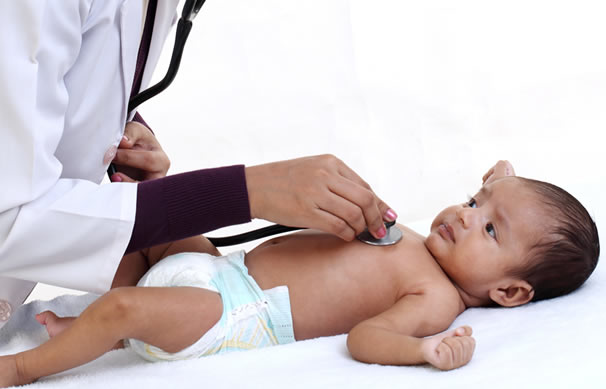To book an appointment online please choose from the options below
Commonly this is due to a developmental abnormality of the pelviureteric junction. Due to this the entire amount of urine coming from the kidney into this pelvis (space) cannot find its way through to the ureter. Over time this builds up pressure and causes further dilatation of this space and also back pressure changes on the meat (parenchyma) of the kidney. This may result in the loss of kidney function more so in a rapidly growing kidney of a child.
Once the decision to remove this blockage / hold up is made based on the results of the above investigations your child may need an operation called pyeloplasty.

General
An operation to remove the faulty junction (pelviureteric) to allow easy flow of urine from the kidney to the bladder.
This is a mechanical blockage and does not rectify spontaneously. If this blockage is allowed to remain it can have detrimental effects on the functioning of your child’s kidney due to the backpressure generated.
Operation
Your child will need to be given a general anaesthetic for the operation. A paediatric anaesthetist who has experience in anaesthetising children will explain what is involved. You may wish to discuss your queries further with them.
See steps below:
1. Hydro
2. Exposure and incision
3. Pathologies incl crossing vessels
4. Extent of excision
5. Anastomosis and transanastomotic stent
You can take your child home after 2 nights if all is well. 48 hours after the operation the stent is knotted prior to discharge home. Then you bring your child back after 7 days to remove the stent on the ward and take him back home the same day after he passes urine a couple of times.
Assessment of success of pyeloplasty is done by a renal tract ultrasound and an isotope scan (Mag3).
You will receive a follow up outpatient appointment after 4 months. At this stage a renal tract ultrasound is done. At further follow up 12 months after the pyeloplasty a renal tract ultrasound and an isotope scan (Mag3 scan) is performed. Your child will be discharged from further follow up if all is well at this follow up.
I have had a 100% success rate for pyeloplasty
I haven't had to reoperate on any patient who had a pyeloplasty operation
Known complication rates are:
This is the most common birth defect. Duplex kidney simply means the 2 parts of the kidney haven’t joined together normally. It is seen in 1 4000 pregnancies. It can be seen in both kidneys but this is not very common with 15 to 20% of duplex kidneys involved. It occurs on the left side and is more common in girls.
Majority of the cases are diagnosed or suspected prenatally. Maternal US may show the features of swelling of the tubes and passages carrying urine from the half of the kidney affected. The end of the tube carrying urine from the upper half may be ballooned called an ureterocoele.
Expectant mum will have a follow up ultrasound scans to see how the condition is behaving? If it is getting worse or the ureterocoele is blocking easy passage of urine from bladder to contribute to the volume of amniotic fluid. There is a provision to puncture this balloon specially in cases of a big sized ureterocoele or bilateral ureterocoeles. These interventions are rarely needed and cases are selected very carefully.
In the majority of cases of a complex duplex system meaning dilated/swollen upper moiety the baby will be started on prophylactic antibiotics which is a major benefit of prenatal suspicion and postnatal prevention of UTI. Baby will have a renal tract US by the end of the first week of life, a voiding cystourethrogram (VCUG) with antibiotic cover and a magnetic resonance urography (MRU). These tests provide anatomical Functional imaging those that give the function in the involved kidney as well as separate function in both halves is called isotope scans viz. Mag 3 scan and DMSA. These tests are done once baby is 3 months old as reliability of the test is dependent on the maturity of the kidneys. If done earlier doesn’t give clear and reliable images.
The investigations provide your clinician with important information about the anatomy / structure and function in the 2 halves of the kidneys.
The upper half if poorly functioning can be removed to prevent future problems. This is called heminephrectomy, hemi meaning half of the kidney.
Does baby always need an operation to manage this condition?
No it is dependent on the swelling in that half of the kidney as well as poor function, sometimes an ureterocoele in the bladder at the end of the tube from the upper half may need attention too.
With prenatal suspicion the postnatal investigations take 3 to 4 months once your clinician has all the information by 4 to 5 months your baby is ready for the operation.
Heminephrectomy:
Nephrectomy:
Please fill in the form below to send us your enquiry
Second opinion becomes a second chance for patient.
Call Us : 07791 916653




